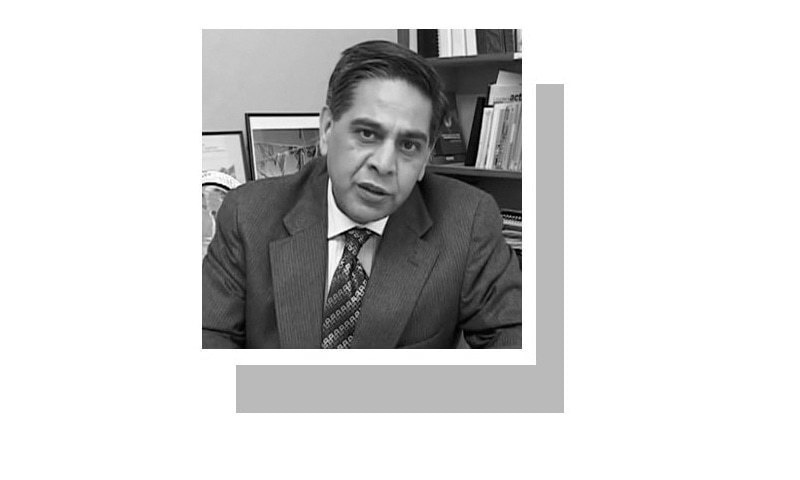THE Karachi floods have exposed Sindh’s lack of preparedness for climate disasters. We’ve seen similar knee-jerk reactions during heatwaves, droughts, floods and cyclones, repeatedly crippling the provincial economy. Pakistan’s development strategists have failed to effectively respond to the climate crisis. Sindh leads in this grand failure, where despite decades of development investments, climate vulnerability and the poverty trap have befallen more people.
Sindh has become a climate hotspot, with overlapping extreme climate events visiting poor areas with growing frequency. Average temperatures are increasing, rains becoming erratic, sea levels rising, Indus water flows decreasing, Indus delta dying, aquifers drying, groundwater depleting, ecosystems degrading; while contamination, waterlogging and salinity are surfacing; and internal migration adding to urban sprawl in flood-prone areas. Karachi is a classic case study of the damage wrought by a failure to invest in climate-resilient municipal infrastructure.
The slow onset of climate change has been scientifically measured over decades. Between 1951-2000, summer temperatures in Sindh increased more than in several other parts of Pakistan. According to the Meteorological Department, the warming trend was greater in winters, with winters getting shorter and summers longer, and the minimum temperature in central regions increasing every summer. The projected temperature increase is higher than the global average. Rainfall has become unpredictable, leaving southern Punjab and upper Sindh in a state of near-permanent water shortage.
This has serious implications for what we grow, when we grow, and what we produce to consume or export, ie the heart of food and water security. For several years, there’s been a steady decline in wheat-sowing area. Untimely rainfalls have damaged cotton and wheat crops, making farmers switch to water-intensive sugarcane (nowhere else in the world is sugarcane or rice grown in a desert). Food production is extremely sensitive to water availability and temperature variability. As temperatures rise, it will fall a further 10 per cent by 2040, with wheat and rice most affected as both the yield and length of the growing season decreases. IASA has projected an 11pc reduction in wheat production by 2050, inevitably decreasing its affordability.
Sindh has become a climate hotspot.
Between 1951-2000, annual precipitation increased in coastal areas. According to UNEP, Pakistan is among the countries most vulnerable to rising sea levels. Karachi’s sea level has risen at a faster rate between 1993-2010 than in the entire period up to that point since 1856. This leads to saline-water intrusion in coastal areas and marine ecosystems, land erosion, flooding, inundation, salinisation of water supplies, and a negative impact on agriculture and fishing. The Indus is ranked third among the world’s most at-risk deltas.
In short, all Sindh’s eco-agricultural zones are in the grip of this slow onset, though its policymakers have yet to fully grasp this. Clearly, the rate of return on decades of annual development plans (ADP) does not justify business as usual. Sindh therefore needs to develop an investment plan for the short to medium term:
First, develop an adaptation plan with district- and tehsil-level projects. The National Climate Change Policy has already identified areas of adaptation. ADPs need to align with provincial and local adaptation needs. Business as usual will only further expose urban and rural populations to risk.
Second, focus on resilience instead of adaptation alone, which is a more precise concept in the international climate lexicon. It can open up new investments in climate-resilient urban and rural development; propel Sindh towards new economic activities like integrated coastal area planning, saline agriculture, brackish water fisheries and domestic ecotourism; and enable new public-private partnerships, as resilience is more measureable for international climate finance.
Third, establish an insurance or risk transfer fund based on ‘loss and damage’. Deeply contested in climate negotiations between developed and developing countries, the concept goes beyond adaptation to reflect the loss of coastal areas, heritage sites or even culture due to climate-induced disasters. This will create a safety net for its victims.
Fourth, lay the foundation for a new climate economy that seeks economic development and climate risk mitigation by focusing on five central areas of Sindh’s economy: energy, cities, food and land use, water, and industry. Transformational change in these systems with private investments and climate-smart technologies can help create a people-centred growth model.
Given the present tight fiscal space, Sindh has no option but to attract finances for climate-smart infrastructure, promote innovation and transparency, and engage with local stakeholders.
The writer is an expert on climate change and development.
Published in Dawn, August 28th, 2020











































